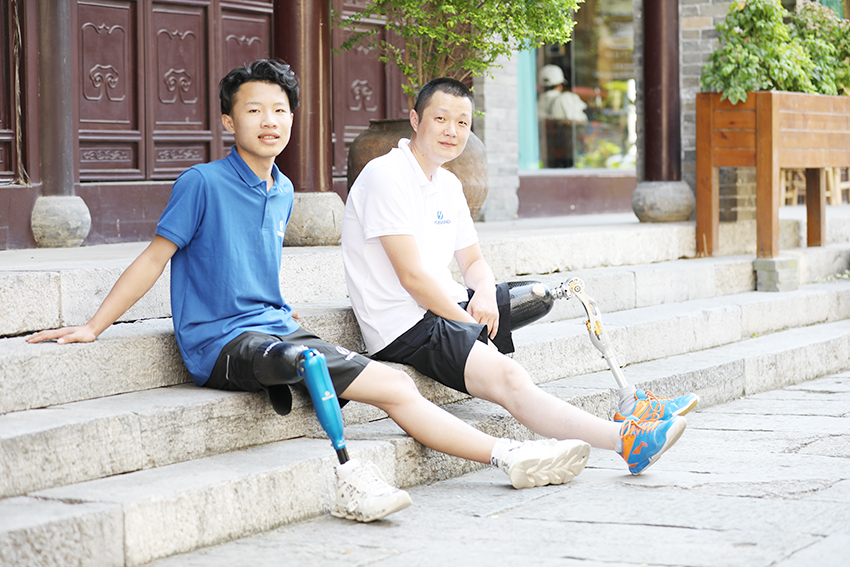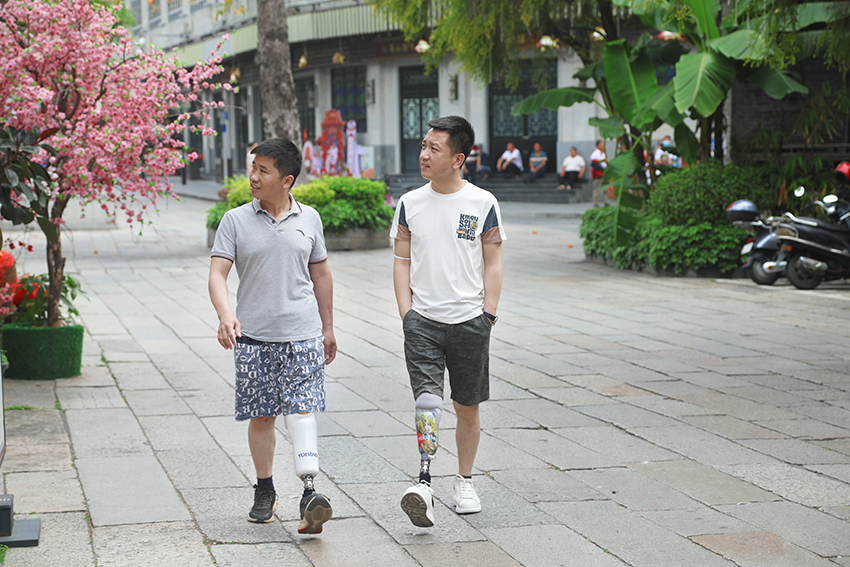It is an important goal for amputees to maintain stable balance and good gait when standing and walking with prosthetic limbs. This goal can't be achieved without the right prosthesis. Body balance depends on the resultant force. The position of the resultant line of action reveals the body's balance position. When the amputee is standing naturally on both legs, both the prosthesis and the healthy limb carry weight. The resultant line of action of the prosthesis reflects the force and balance of the healthy limb. The weight line of the amputee is the line of action of the resultant force on the healthy limb and the prosthesis, which is the reflection of the balance of the amputee wearing the prosthesis. It depends on the position of the load-bearing line of the prosthesis and the healthy limb. When normal people stand naturally, the body in sagittal plane coincides with the weight line of bilateral healthy limbs, and the overall balance is consistent with the balance of lower limbs.

After amputation, the center position of the body changes due to the compensatory effect of muscle force imbalance, the change of the range of motion of the stump joint, the adaptation of the prosthetic line and the socket. The weight line of the amputee and the weight line of the prosthesis changes in the sagittal plane. The balance of prosthetic and healthy limbs is not unified, which directly leads to the gait asymmetry of amputees.
At present, many static alignments of lower limb prostheses are widely used to refer to the weight line of prostheses. This alignment method emphasizes the balance and stability of the prosthesis side, ignoring the comprehensive balance of the amputee. When an amputee wears such a prosthesis, the weight line deviates significantly from the weight line of the prosthesis, and the gait of the amputee is asymmetrical between the healthy side and the prosthesis side. Prosthetic technicians need to make long and careful fitting and adjustment of the prosthetic alignment to allow the patient to achieve a good gait.

With the concept of prosthetic balance, it is possible to provide amputees with the right prosthetic alignment for different conditions at different times. As the patient's muscle strength or range of motion of the joint increases or decreases, the balance of the prosthesis changes accordingly. The prosthetic alignment is adjusted according to the new situation to help the amputee achieve a new balance.
Every lower limb prosthesis must be aligned. According to the characteristics of different prostheses, amputees are required to learn different gait patterns and learn different functional compensations. A prosthetic technician's alignment cannot be performed correctly without understanding the functional compensation performed by the amputee. The use of prosthetic balance for alignment can combine the characteristics of the prosthesis with the functional compensation of the amputee, and deal with the alignment problem of the prosthesis according to the specific situation of the amputee. This makes more sense than following a fixed guide line. In accordance with the weight line of the prosthesis, the lower limb prosthesis alignment adjustment according to the balance of the prosthesis is conducive to improve the balance of patients and achieve a better gait.
After amputation, the functional compensation of the stump is inevitable. The degree of compensation depends on the range of motion of the preserved joints, the strength of the muscles that move those joints, and the nerves that control those movements. Functional compensation of amputees is a normal process of adjusting to wearing prosthetic limbs. Amputees wear prosthetic limbs and must learn new walking patterns to integrate them into their bodies. This requires prosthetics technicians to align the prosthesis according to the functional compensation and movement pattern of each amputee. In practice, the specific circumstances of amputees are different, and the development and change are very different, which is also the consideration of the comprehensive ability of prosthetics technicians and prosthetics manufacturing units.
In the alignment adjustment of amputees, YOBAND attaches great importance to the comprehensive balance of amputees. No matter the weight line is in front or the weight line of the prosthesis is in front, the patients can achieve a satisfactory gait. Therefore, on the premise of ensuring the balance of the prosthesis, the alignment line of the prosthesis can be adjusted according to the comprehensive balance to achieve a better gait.


